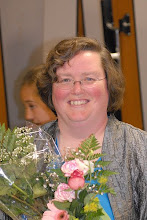

One of the highlights of our day in Eureka was an afternoon tour on a 99 year-old wooden motor boat called the Madaket. She’s been beautifully maintained, and has a gorgeous cabin with, the captain proudly pointed out, the smallest fully-equipped bar licensed in the state of California.
The crew are very proud of the boat and the captain recounted a bit of her history as we chugged up and down the channels of the bay. Madaket was originally used as a ferry to move workers to lumber camps, saw mills, and other work places in the decades before the bridges were built. She carried some 1500 people a day; to put that in perspective for us, the captain pointed out that there were only about 15 on our tour, although she is licensed to carry 45 at a time. Our uncrowded tour gave me plenty of elbow room for taking photos!
We crossed under the 255 overpass into Arcata Bay where tall white “sticks” mark the edges of mud flats. The captain confessed that he isn’t good at “reading the sticks” and stays back in the safe, deeper (...well, 25 foot deep...) water, but we saw another, smaller boat zoom past us, on its way to work the oyster beds. Something like 70% of California’s oysters are grown there, for both domestic use and export. The annual Arcata Bay Oyster Festival draws thousands of people (18000 according to their 2009 web site recap), who consume tens of thousands of oysters cooked in myriad ways.
The bay has provided bountiful shellfish for thousands of years. The captain pointed out part of an island that’s in the process of being reclaimed by the area’s native Americans.They can trace their ancestors’ use of the bay back some 7000 years via the shoreline’s enormous shell middens -- piles of shells left when the oysters have been shucked.
The boat chugged back beneath the overpass and we got a good view of a giant sculpted fisherman, a memorial to the area’s many fishing folk who have died on the job. We motored past the landing where we had caught the boat and out towards the breakwater to see a couple of now-closed pulp mills. One is the greenest pulp mill in the world, the other a not-so-green one that was shut down decades ago by Surfrider Foundation, which was then in its infancy. Apparently the chlorine used in the process of paper-making was polluting the water so badly it was burning the skin of surfers at the harbor mouth!
Although the pulp mills are no longer in operation, there is a stack of logs that would cover a city block, and a small mountain of wood shavings. Nowadays they are loaded into barges and taken up to the Columbia river for processing into paper by pulp mills up there. There is hope that the green mill, now owned by China, will come back online when the economy picks up.
As the captain gave us a narrated tour of the sights, he also pointed out wildlife, mainly in the form of birds: cormorants, pelicans, two blue herons, an osprey nest. We also caught a glimpse of a couple harbor seals.
Before going back to the Madaket’s landing, the captain took us past the amazing Carson mansion, which he claims (and I don’t doubt) is one of the most photographed buildings in the world. Colorful and covered from turret top to lowest porch step in Victorian wooden “lace,” this Painted Lady is truly a queen! It reminded me of one of the fanciful over-the-top wedding cakes on The Food Network and had me shaking my head at what can be done when too little sense is combined with too much money. But I changed my mind when the captain explained that the house had been designed and built by a local lumber baron during the depression. It seems he had decided to invest in building his mansion and a not-quite-so-grandiose one for his son across the street as a way to keep his mill in operation and his workers unemployed. His employees lavished their time and attention on it inside and out, and while he got rock-bottom prices on materials, the project kept his workforce going through the worst of times. Seems like an idea all of today’s bailed out bankers and corporate honchos might want to consider to jump-start our economy...

No comments:
Post a Comment